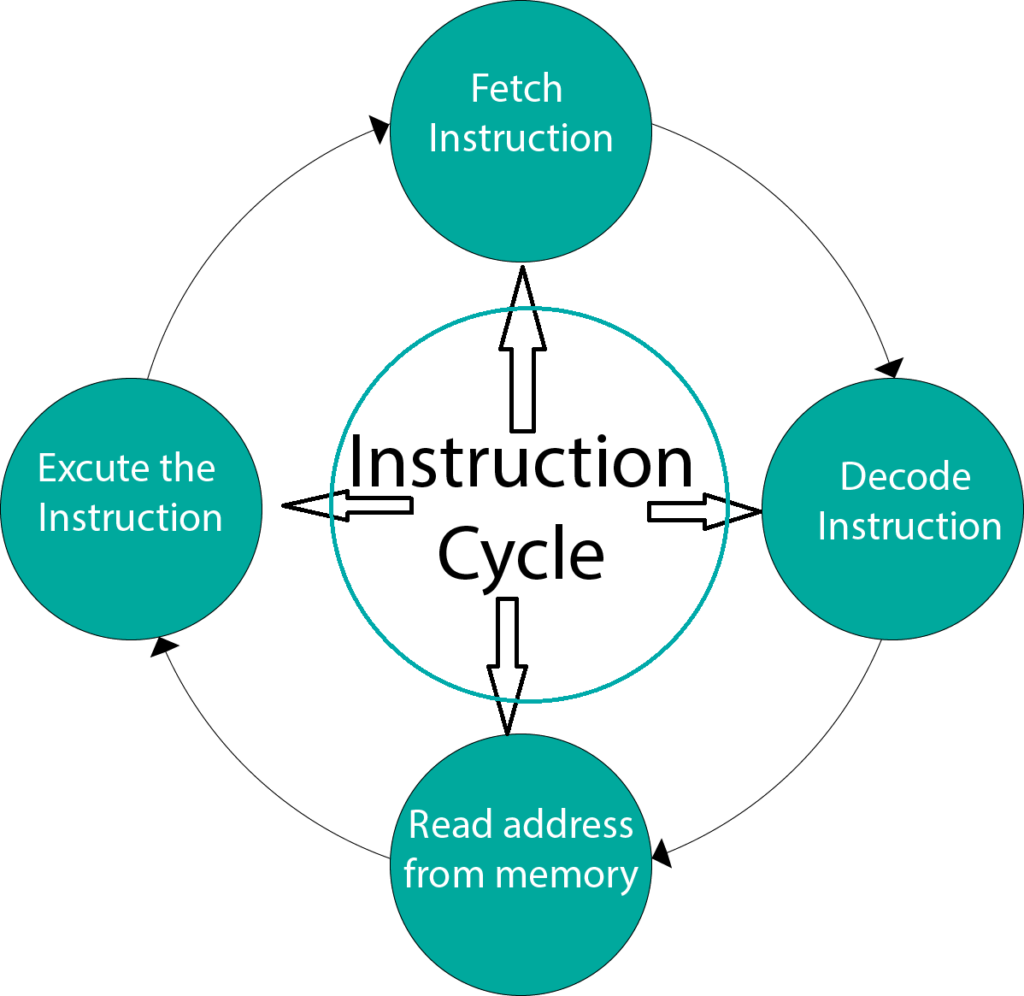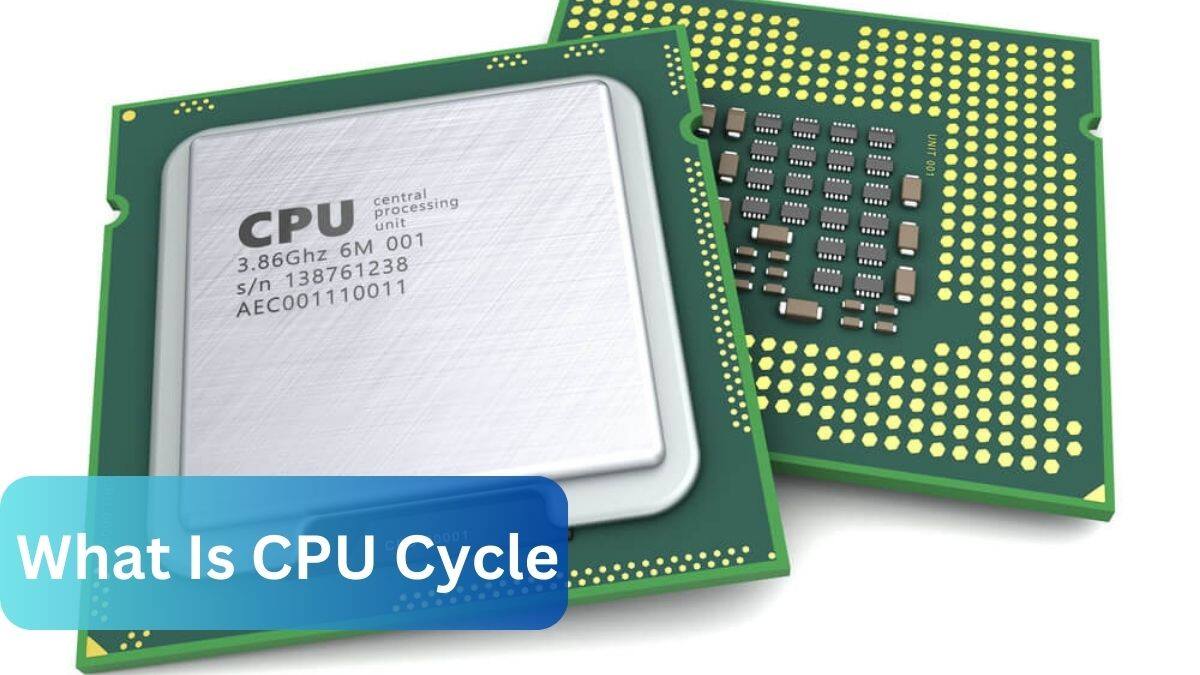A CPU cycle is the basic process a computer’s CPU goes through to execute a task. It involves fetching, decoding, executing instructions, and writing back results. Every action your computer performs depends on millions of these cycles happening every second.
When I first learned about what is CPU cycle, I realized how every task on my computer, like opening a browser or running a game, relies on these tiny operations. It’s fascinating to know that each action is powered by countless cycles working in the background.
In this article, we will discuss “What Is Cpu Cycle”.
Table of Contents
Introduction to CPU Cycles
What Does a CPU Cycle Mean?
A CPU cycle, often called a clock cycle, is the fundamental operational rhythm of the Central Processing Unit (CPU). Think of it as the heartbeat of your computer’s processor—every tick represents a tiny slice of computational work being executed.
Importance of CPU Cycles in Computing
Without CPU cycles, your computer couldn’t process anything. Every task, whether it’s opening an app or loading a webpage, is a result of millions (or even billions) of CPU cycles working seamlessly in the background.
How Does a CPU Work?
Role of the CPU in a Computer System
The CPU is the brain of your computer. It handles all instructions it receives from software and hardware and performs the necessary calculations to keep your system running smoothly.

Breakdown of CPU Operations
The CPU operates in stages: fetching instructions, decoding them, executing the tasks, and writing back the results. Each of these steps takes one or more CPU cycles.
Components of a CPU Cycle
Fetch Stage
During the fetch stage, the CPU retrieves an instruction from the computer’s memory. This involves interacting with registers and cache to ensure the data is ready for processing.
Decode Stage
In this stage, the fetched instruction is translated into a format the CPU can understand. The complexity of this process depends on the type of instruction.
Read Most Important: when you see your cpu parts in minimal requirements – Ultimate Guide 2024!
Execute Stage
The CPU performs the required operation, such as arithmetic calculations or data manipulation. The ALU plays a significant role here, handling mathematical and logical operations.
Write-back Stage
Finally, the CPU stores the results in memory or sends them to an output device. This ensures data accuracy and prepares the CPU for the next cycle.
Types of CPU Cycles
Instruction Cycle
This cycle involves fetching, decoding, executing, and writing back a single instruction. It’s the most fundamental type of CPU activity.
Machine Cycle
From a hardware perspective, the machine cycle includes lower-level tasks like reading from or writing to memory.
Factors Influencing CPU Cycles
Clock Speed
Measured in GHz, the clock speed determines how many cycles a CPU can perform in a second. A higher clock speed generally means better performance.
Instruction Set Architecture (ISA)
The ISA defines the CPU’s capabilities. Some architectures are more efficient, requiring fewer cycles for the same task.
Parallel Processing
Multi-core processors distribute tasks across cores, enabling faster completion and better use of CPU cycles.
Optimizing CPU Cycles
Efficient Coding Practices
Writing optimized code can significantly reduce computational overhead, minimizing wasted CPU cycles.

Hardware Upgrades
Upgrading to a CPU with higher clock speeds or more cores can drastically improve cycle efficiency.
Real-World Applications of CPU Cycles
Gaming and Graphics Rendering
Modern games demand high-performance CPUs to handle complex graphics and physics simulations.
Data Processing and Analytics
Massive datasets require CPUs with efficient cycles to perform analyses quickly and accurately.
What is CPU Cycle in Computer?
A CPU cycle is the process the CPU follows to execute a single instruction. It includes fetching the instruction, decoding it, executing it, and storing the result.
What is CPU Cycle Explain with Diagram?
A CPU cycle involves four stages: fetch, decode, execute, and write-back. A diagram typically shows these steps in a loop to represent continuous processing. (Unfortunately, I can’t provide visual diagrams here, but you can imagine these steps as a flowchart.)
Read Most Important: Zalman CNPS9X Performa ARGB 61.36 CFM CPU Cooler – Guide 2024!
What is CPU Cycle and Clock?
A CPU cycle is the sequence of steps the CPU takes to process an instruction, while the clock synchronizes these steps. The clock speed, measured in GHz, determines how many cycles the CPU can perform per second.
CPU Cycle Time
CPU cycle time refers to the time taken for one CPU cycle. It is calculated as the reciprocal of the clock speed (Cycle Time = 1 / Clock Speed).
What is Clock Cycle in Computer Architecture?
A clock cycle is the time between two pulses of the CPU’s clock signal. It determines the rate at which instructions are processed in the CPU.
What is a Good Clock Speed for CPU?
A good clock speed depends on the task, but for general use, 3.5–4.0 GHz is considered ideal. For gaming or heavy tasks, higher speeds or multi-core processors are more effective.
CPU Cycle Diagram
A typical CPU cycle diagram includes stages like Fetch, Decode, Execute, and Write-back, often represented in a circular flowchart to show the continuous nature of operations.
Clock Cycle Time Formula
The formula for clock cycle time is:
Clock Cycle Time = 1 / Clock Speed
For example, a 3 GHz CPU has a cycle time of approximately 0.33 nanoseconds.
What is the CPU cycle?
A CPU cycle is the process the CPU follows to execute an instruction, including fetching, decoding, executing, and writing back results.
What is CPU cycle in OS?
In an operating system, a CPU cycle refers to the time the CPU spends processing instructions for a specific task, often managed by the OS for optimal multitasking.
How long is one CPU cycle?
The duration of one CPU cycle depends on the clock speed. For example, a 3 GHz CPU completes one cycle in about 0.33 nanoseconds.
What are the CPU processing cycles?
CPU processing cycles consist of four main stages:

- Fetch – Retrieve instructions.
- Decode – Interpret instructions.
- Execute – Perform the task.
- Write-back – Save results.
How do I check my CPU cycles?
You can monitor CPU cycles using performance monitoring tools like Task Manager in Windows, Activity Monitor on macOS, or third-party apps like HWMonitor.
What does it mean for a CPU to be single cycle?
A single-cycle CPU completes the execution of one instruction in a single clock cycle. It’s simple but less efficient for complex tasks compared to multi-cycle processors.
What is CPU cycle count?
CPU cycle count is the total number of cycles a CPU uses to complete a specific process or task, often used to measure performance or efficiency.
Is CPU cycle burst time?
No, CPU cycle and burst time are different. Burst time refers to the time a process runs on the CPU without interruption, while CPU cycles measure the execution of instructions within that time.
Read Most Important: how to cool down ryzen 5 7600x cpu – Complete Guide 2024!
How to calculate CPU cycle time?
CPU cycle time is calculated using the formula: Cycle Time = 1 / Clock Speed. For example, a CPU with a clock speed of 2 GHz has a cycle time of 0.5 nanoseconds.
What does CPU mean?
CPU stands for Central Processing Unit. It is the brain of the computer, responsible for executing instructions and managing tasks.
What 3 step cycle does the CPU use?
The CPU often follows a fetch-decode-execute cycle. It fetches instructions, decodes them into understandable commands, and executes the task.
What is the CPU command cycle?
The CPU command cycle refers to the process of fetching, decoding, and executing instructions repeatedly to perform tasks efficiently.
What is a cycle in OS?
In an operating system, a cycle represents the CPU’s process of completing an instruction for a task, contributing to the system’s overall operation.
What is a cycle in a CPU?
A cycle in a CPU is the time it takes to process one step of an instruction, such as fetching, decoding, or executing it.
Can 1 PC have 2 CPUs?
Yes, a PC can have two CPUs, commonly found in high-performance systems like servers, enabling parallel processing for better performance.
What happens during one CPU cycle?
During one CPU cycle, the CPU fetches an instruction, decodes it, performs the operation, and stores the result, preparing for the next task.
How long is 1 CPU cycle?
The length of one CPU cycle depends on the clock speed. For example, a 3 GHz CPU completes one cycle in about 0.33 nanoseconds.
How do I find my CPU cycle rate?
You can find your CPU cycle rate by checking the clock speed of your processor in your system settings or using tools like Task Manager.
What is the order in the CPU operation cycle?
The CPU operation cycle follows this order: Fetch → Decode → Execute → Write-back, repeating continuously to process tasks.
How fast is a CPU cycle?
The speed of a CPU cycle depends on the clock speed. For example, a 3 GHz CPU completes one cycle in about 0.33 nanoseconds, performing billions of cycles per second.
Why is my CPU usage so high when nothing is running?
High CPU usage may occur due to background processes, malware, outdated drivers, or system updates running silently. Checking Task Manager can help identify the issue.
How do I know if my CPU is running properly?
You can check your CPU’s performance using tools like Task Manager, CPU-Z, or benchmarking software. Look for stable temperatures, normal usage levels, and no frequent crashes.
What is the formula for CPU cycle time?
The formula is CPU Cycle Time = 1 / Clock Speed. For instance, if the clock speed is 2 GHz, the cycle time is 0.5 nanoseconds.
How much CPU usage is normal?

For light tasks, 5-20% usage is normal, while gaming or multitasking can use up to 70-80%. Consistently high usage above 90% may indicate a problem.
How do you power cycle a CPU?
To power cycle a CPU, shut down the computer, unplug it, and wait for 10-30 seconds before restarting. This helps reset the CPU and clear minor glitches.
Read Most Important: How to See CPU Usage in InterWorx – Full Guide 2024!
FAQs
What is the main purpose of a CPU cycle?
It’s to execute a single unit of computational work in the CPU.
How does clock speed impact CPU cycles?
Higher clock speeds allow the CPU to perform more cycles per second, enhancing performance.
Can software optimization reduce CPU cycle consumption?
Yes, well-optimized code reduces unnecessary cycles and improves efficiency.
What is the difference between machine cycles and instruction cycles?
Machine cycles are hardware-level tasks, while instruction cycles focus on software-level operations.
How do multi-core processors improve CPU cycle efficiency?
They distribute tasks across cores, allowing parallel processing for faster completion.
Conclusion
Understanding the CPU cycle is key to appreciating how your computer processes tasks efficiently. From basic operations like fetching and decoding instructions to executing and writing back results, every action depends on these cycles working seamlessly. Factors like clock speed, architecture, and coding practices directly impact performance, making CPU cycles crucial in computing. Whether for gaming, data processing, or everyday use, optimizing these cycles ensures better performance and reliability in modern systems.
Read Most Important:

[…] Read Most Important: What Is CPU Cycle – Explore Your Computer’s Specs In 2024! […]
[…] Read Most Important: What Is CPU Cycle – Explore Your Computer’s Specs In 2024! […]